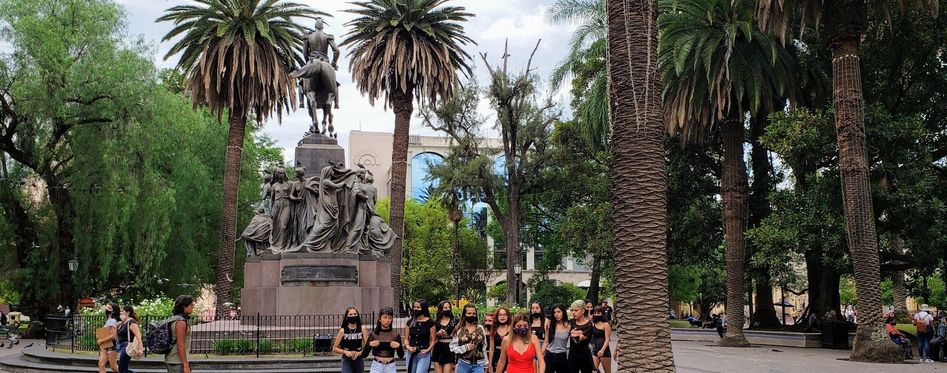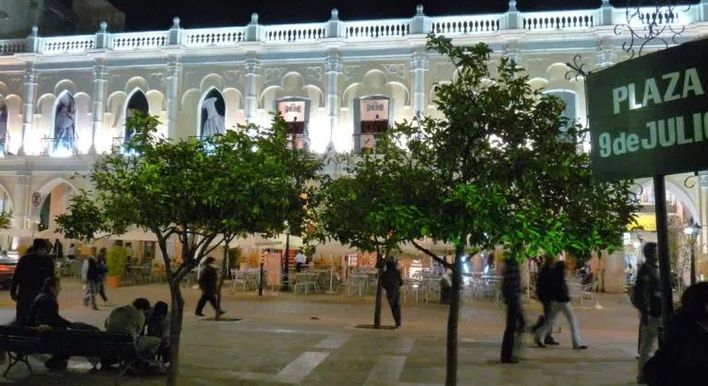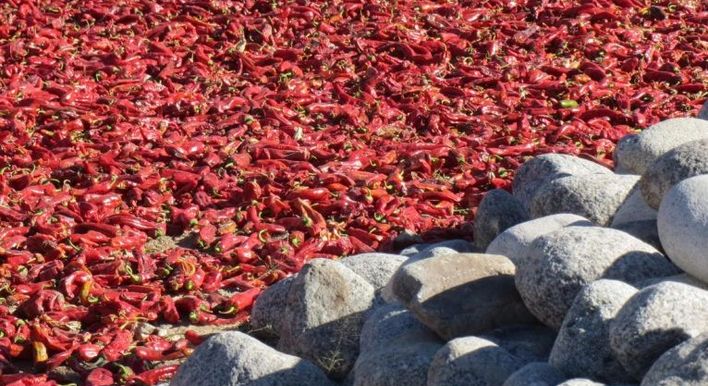Salta, Argentina, also known as Salta la Linda, is one of the most beautiful locations in the northwest of Argentina. This historic city has a rich colonial culture with traditional food choices and attractions. Typical local food includes empanadas (small pies filled with meat, chicken, sweetcorn or cheese), and leaf-wrapped humitas (containing sweetcorn and cheese) and tamales (cornmeal and meat): and in the winter, you must try the filling stew known as locro, typically eaten from the national holiday of 1st May (Dia del Trabajador) onwards.
Salta’s nightlife also attracts visitors from all over the world: try one of the local music peñas for traditional folk music and dancing.
A tour we think you'll love
The rocky red canyons surrounding Salta offer many chances for unforgettable adventures. Join our Salta city tour for the perfect introduction of things to do in northwest Argentina: we will help you experience the seven best things to do in Salta.
1) Cerro San Bernardo’s Hill
Cerro San Bernardo offers some of the best views of Salta city. At the top, you will find a cafe, playground, and market with souvenir vendors. You can reach the top of San Bernardo Hill in three ways: via the cable car which runs from from dawn to dusk, you can drive to the top, or walk up and down all 1,070 steps. In the evening, we recommend you take a cab to Salta’s newest gourmet restaurant, El Baqueano, at the top of San Bernardo Hill, where you will be rewarded by spectacular views of the city lights.
2) Basílica De San Francisco
The Basílica de San Francisco is one of the most recognizable monuments in Salta. This massive church towers towards the sky with its terracotta, ivory, and white details. The bell tower sits 54 meters high, making it the tallest in South America. Explore the San Francisco Convent and library while at the church. The cells host the Museum of Sacred Art. Many of the rooms hold historical instruments, silverware, and imagery.
In the gardens of San Francisco there is a new open-air cafe which is the perfect place to take a break from sightseeing and have a late breakfast of media luna (croissant) and cortado (coffee). While opposite is one of the most traditional restaurants in Salta city, Doña Salta.
3) Plaza 9 De Julio
The Plaza 9 de Julio is the city’s main square. In the centre, you will find a monument dedicated to General Juan Antonio Àlvarez de Arenales, one of the heroes of the War of Independence from 1810 to 1826, and the governor of Salta from 1824 to 1826. This statue has female figures surrounding it to represent the Argentine nation.
Some of the most significant cultural locations surround the national historical monument, including the original city hall. The MAAM archaeological museum of high altitude contains the mummies of three children left as a sacrifice at Llullaillaco, one of the highest volcanoes in the Andes, in the time of the Inca. A short walk away is one of the other outstanding museums, dedicated to Gen. Martin Miguel de Guemes, leader of the gaucho army in the struggle for independence from Spain.
4) Quebrada Del Toro
The Quebrada del Toro is a beautiful gorge running northwest from Salta. The Tren a las Nubes, a narrow railway from Salta runs through it: this was once the outlet to the Chilean coast. Our Salt & 7 Colours tour includes a visit to San Antonio de los Cobres, the mining town at the top of the gorge, as well as to the Salinas Grandes salt flats further north. The landscape here is breathtaking, with cacti studding the canyon.
5) Quebrada De Las Conchas
The Quebrada de Las Conchas is part of a scenic drive from Salta to Cafayate: heading south, you pass from tobacco fields into this natural reserve. The winding, 50km road takes you through the rocky red canyons, with breathtaking views around each corner. Several pull-offs are available on the route to help you take in the formations. The name of the canyon derives from the fossils of shells (conchas) found here: most of this landscape is made up of sedimentary deposits dating back at least 65 million years, to the time of the dinosaurs. Wind and water erosion has left strange naturally formed shapes. El Sapo, resembling a toad, El Fraile (The Friar), which looks like a hooded, cloaked figure and Las Ventanas (windows), Los Castillos (castles) are among the must-see photo stops.
6) Los Cardones National Park
Los Cardones National Park encompasses 650 square kilometres. You will find rocky red canyons, ravines and sierras throughout the natural region. This national park is full of Argentine cardon cactus similar to the saguaro with a tall and menacing presence. This is the road to Cachi and Molinos, and the northern part of the Valles Calchaquies wine region, part of our Classic Wine route, along with the Quebrada de las Conchas,
7) Take In The Surrounding Countryside
Visit the surrounding countryside of Salta to experience the highest altitude wine region in the world. As you’ll read on further blogs of ours, Torrontes is a white variety unique to Argentina, while Tannat is a lesser known red which is the perfect accompaniment to the classic Argentinian asado (barbecue). And we all know about Argentinan Malbec: this South American country is now the biggest producer in the world if this grape variety.
Explore Jujuy & Salta!
The final option for your trip to Salta is to take a road trip to another part of northwestern Argentina. Consider the province of Jujuy, gateway to the Quebrada de Humahuaca, rich in history and natural beauty, and connection for tours to Chile and Bolivia.
Salta, Argentina offers rich colonial architecture, diverse cultural experiences, and stunning natural views. Take a road trip out of the region to see the stunning countryside or experience vibrant city life.
Contact us and we can organise a memorable tailor-made trip to Salta.







